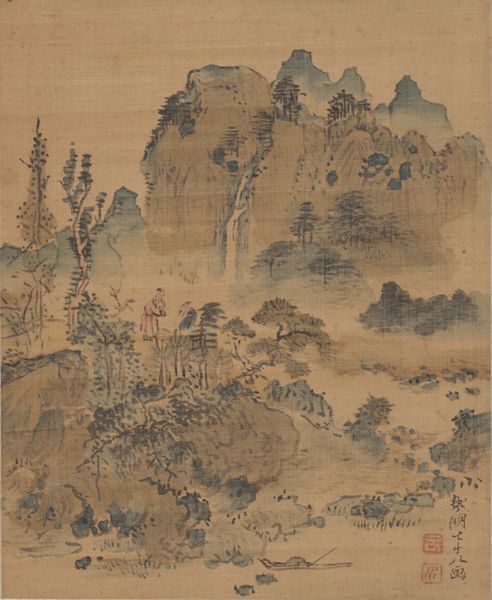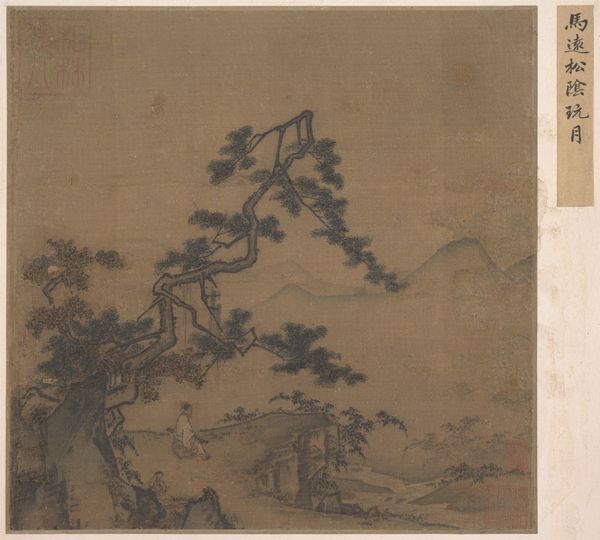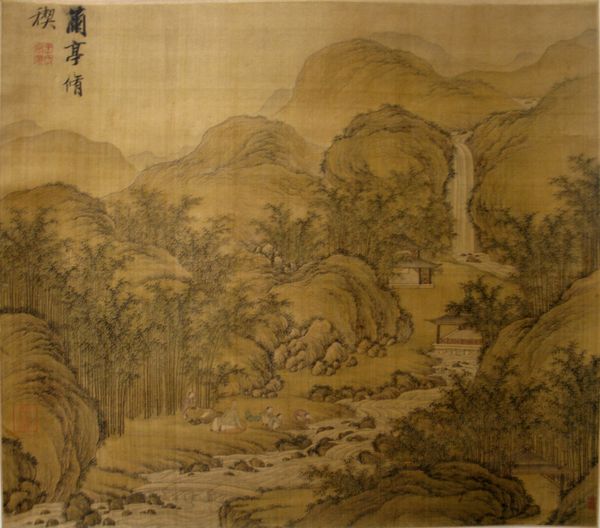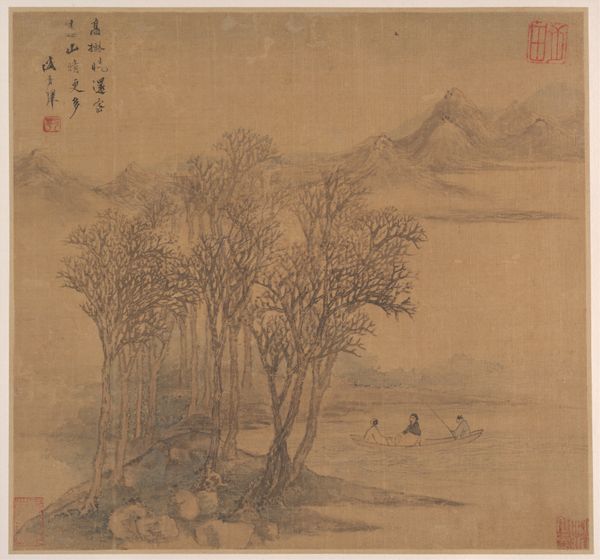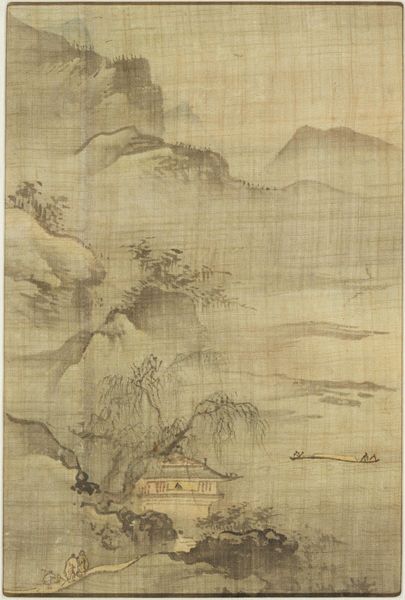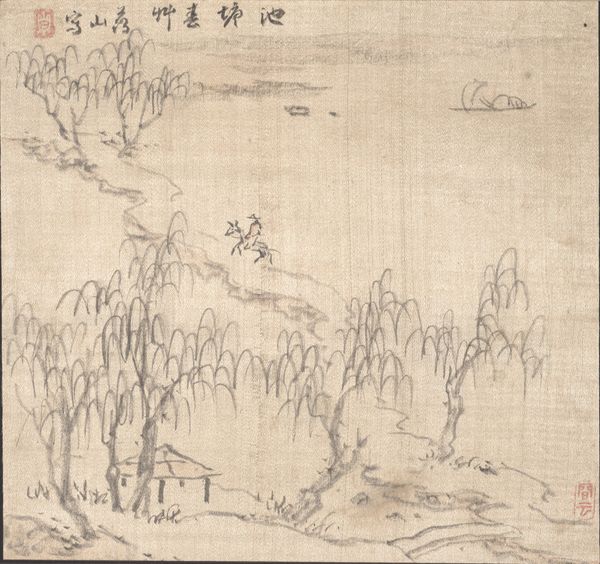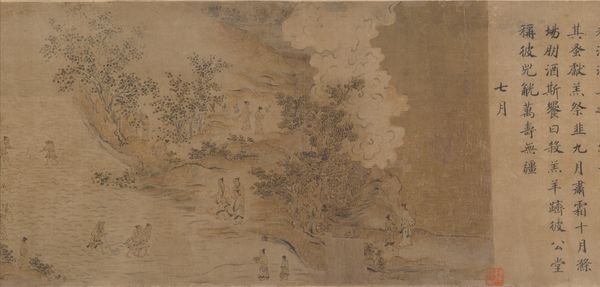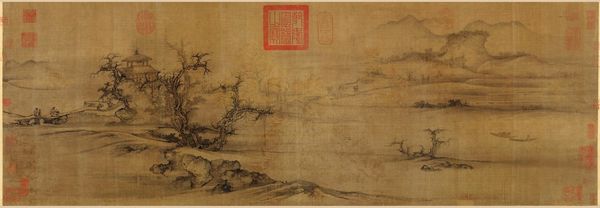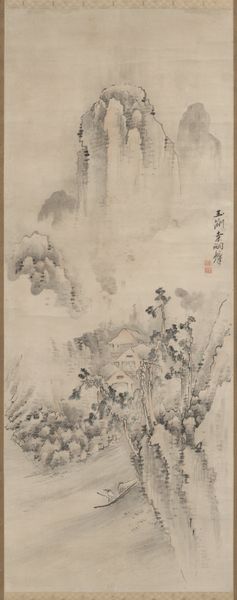
painting, ink
#
ink painting
#
painting
#
asian-art
#
landscape
#
ink
#
watercolor
Dimensions: 8 7/8 × 9 in. (22.54 × 22.86 cm) (image)41 5/8 × 11 13/16 in. (105.73 × 30 cm) (mount)
Copyright: Public Domain
Editor: This is "Meeting Along the River," an ink painting made by Zhu Duan sometime between 1492 and 1518. I find it very calming, the muted tones create a sense of tranquility and spaciousness. What stands out to you? Curator: I'm immediately struck by the figures sparsely placed within the landscape, and the implied narrative suggests both travel and contemplation. Notice how small they are in relation to the mountains. The artist is evoking the Taoist principle of humanity's humble place within a vast universe. How does that reading affect your sense of its tranquility? Editor: That makes me think about how temporary and fleeting life can be, compared to these monumental, timeless mountains! Curator: Exactly. Consider the waterfall cascading down the mountain; water is symbolic of constant renewal and the passage of time, echoing that feeling of human impermanence. Is that something you see reflected elsewhere in this painting? Editor: I think the winding river also symbolizes the passage of time, doesn't it? It’s almost like a visual metaphor for life's journey, with all its twists and turns. Curator: Precisely! And look closer still, what does the artist suggest about nature versus the human world? Editor: The buildings seem intentionally placed to blend in, and it reinforces the feeling of balance with nature. Before, I just saw it as a nice landscape painting, but now I see it’s filled with all these embedded ideas! Curator: These symbols build up meaning and reveal lasting values! Now consider the visual language, too, in relation to its message. That, perhaps, is for another visit.
Comments
minneapolisinstituteofart almost 2 years ago
⋮
This painting’s focus on a towering rock outcropping gives it a monumental quality, although the work itself is quite small. Created in the late 1400s, it represents the continuation of an enduring tradition in landscape painting initiated during China’s Northern Song dynasty (960–1127). The tall pines and primary reliance on gradient tones of ink to define rock and mountain forms are also hallmarks of the era.
Join the conversation
Join millions of artists and users on Artera today and experience the ultimate creative platform.
